My favorite Driftless stream is at my feet. This particular one, in some spots nearly as wide as a city sidewalk, winds fifteen feet below-grade, through a cow pasture — watch for the bull, natch — and as I walk the bank on this hot July midday, grasshoppers spring before me in their haphazard parabolas. Trout eat them.
If your shadow crosses the ultra-clear water, fish scatter for undercuts. It's one of those sublimely difficult small streams: there's a trout in every lie, and if you get the fly in just the right spot, and neither line nor leader spooks the fish, they eat it. Most of the time you fail, of course, but then you just head to the next bend. There are miles of next bends.
I'm carrying a brand-new rod, a demo model of the new Airlite Versa Trout— with a little trepidation. Normally, I'd take a day or two somewhere close to home to fish and evaluate a demo rod like this, but regular-life stuff has blotted out my attempts to do so this year. And so the Versa Trout has elbowed its way into one of my favorite trips of the year. The beloved 4 weight that I always fish on this stream, on this trip, is in the truck. Just in case.
Airlite fly rods
The Airlite fly rod brand is a new venture from the Mayfly Group, the folks behind big names like Abel, Dyna-King, Ross Reels, and Airflo. It's a spin-off of Airflo's European-focused Airlite rods, rebooted for the diverse fisheries of the North American market. Airlite touts refined tapers and aesthetics, designed by a group of industry veterans. They're meant to be affordable and fishable, with six different models to cover a wide range of fishing types with a high level of specialization. Prices range from $300 to $500. For testing, I received an 8'6" 4-weight Versa Trout ($349). It's intended to cover a wide range of trout-fishing styles, and I intended to give them all a try.
WHAT WORKS
The feel
The first thing I noticed is how light in the hand the Versa Trout feels. A large part of this is likely due to six fewer inches at the tip — and that's okay. An industry person once told me that the graphite layup tends to be heavier on "value" rods, inch-for-inch, than more expensive rods, and by choosing the eight-foot-sixers instead of the nine-footers, you can cheat your way into a much more premium-feeling rod. I suspect that applies here, though I haven't tried the 9' Versa Trout to confirm.
I strung it up with a fresh Scientific Anglers Amplitude Infinity, an all-rounder half-size-heavy line that I thought ideal for a rod named the Versa: as in versatile. First impression: despite being described as a "medium" action rod, I found that it felt quite fast. The tip section has almost no bounce at the end of each stroke — it stops nearly dead, as if there's some kind of built-in dampener. I don't know if this was intentional, but it reminds me of Orvis's recent Helios rods — it reduces the wobbles in your line as you lay down your cast. It also makes the rod — initially — feel almost unpleasantly fast, but once I got it loaded into the middle section, I found plenty of flex and reserve power.
In practical terms, I found that this led to excellent mid-to-long-range accuracy, at the cost of less elegant short-range presentations — the opposite of what I expected to find in a "budget" rod.
Fishing
Terrestrial fishing a Driftless spring creek like this is a game of pinpoint accuracy. Your hopper has to land at the head of the run, an inch from the grass that's drooped over the outside bend of the stream. Ideally, the hopper his the grass and falls into the stream.
With the Versa Trout, I was hitting those pinpoint spots a little more often than I expected, which was really fun. Any trepidation I'd had about not fishing my "favorite" rod has evaporated.
When I needed a little extra muscle to keep the line above the tall vegetation, I never felt like I was bottoming the rod out. In fact, I started to suspect that maybe this was a 5 weight in disguise, but then a ten-inch brown slurped my hopper and the rod bent satisfyingly into the butt section, protecting both my 5X and the fish until I got the net out.
Unsurprisingly, the Versa Trout does just fine as a warmwater rod. Small poppers and streamers were no issue with the Amplitude and a palm-sized bluegill puts a serious bend in the rod as it swims its trademark circles. I also tried the Versa with my go-to dry fly line, the Amplitude Trout Standard from Scientific Anglers, which is a long-tapered true-to-weight WF-4F. This combo isn't as forgiving as the Versa with the heavier Infinity, but a patient caster will still be able to make those delicate late-summer trico presentations.
Aesthetics
The Korean-made Versa Trout has a matte-black blank with dark olive accents and neatly-wrapped single-foot guides, a nod to its European heritage. The interesting skeletonized reel seat shows off some kind of exotic burl wood, and the cork half-wells grip is serviceable. It really looks like an understated premium rod, not a fluffed-up budget rod.
Neat extras
Airlite rods come in a nifty triangular rod tube that won't roll off your workbench or to the unreachable front of your truck bed; and each rod section is labeled with length and weight (e.g. "8'6" 4wt") on the ferrule, a forehead-slapper of a feature that will help anyone who's ever mixed up the sections of a couple same-color rods. I imagine this is intended to facilitate their section-replacement style industry-standard warranty. Airlite also says that replacement rod sections will be available for direct purchase, though as of the time of this writing, they're not yet listed on the website.
WHAT DOESN'T
The feel
The tip-dampening effect seems to lend the Versa Trout a slightly uncanny "numb" feeling in the hand. Several other anglers noted it — but only when directly comparing to other rods, and primarily when wiggling, not casting, the rod. On the water, it's not noticeable, except in the sense that such a stiff tip section makes short-range shots harder to execute, while improving that mid-to-long distance accuracy. Likely for the same reason, I found the setup a little tricky with a classic indicator-nymph rig. This isn't my area of expertise, to be sure, but a quick, short-ish 4 weight seems less than ideal when you need to carefully roll cast and mend. I suspect overlining the rod would help in that scenario.
The Dots
Instead of the common alignment dots painted on the ferrules of most fly rods, the Airlite rods have small arrows or triangles on the top of the blank to help you align each section. Cool, in concept. Unfortunately, on the examples I looked at, the arrows are slightly misaligned. If you line the arrows up, your guides are slightly off-kilter. You'd probably never notice this with dots, but the added geometric precision of aligning two converging arrows makes even a slight error glaring. Obviously this is not a performance issue, but nearly every angler I handed the rods to noticed it immediately. I assume — and hope — that this'll be corrected on future production batches, as it's a minor but visible own-goal.
FINAL WORD
I like the Airlite Versa Trout. It's fun to fish, and very capable of doing anything a half-decent caster asks. It might lack some of that electric liveliness that a true premium rod telegraphs to your fingers, but I think you notice it because the Versa Trout comes so close. When you grab a lot of budget rods, they feel heavy and soft, and you expect a corresponding casting experience. But the Versa Trout feels light and fast in-hand, and throw tight loops while remaining forgiving of mistimed strokes.
The Versa Trout is a great example of how the maturation of fly rod technology is a win for all of us. It's crisp, surprisingly capable, and looks great — it's worth a serious wiggle at your local fly shop. If you're used to casting premium flagship rods, then yeah — you'll feel the difference. But it's not as big a difference as it used to be. And if you're looking to upgrade from entry-level, or from a mid-priced rod that's ten or so years old, prepare to be impressed.




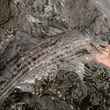
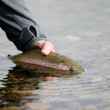
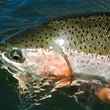



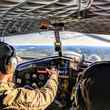

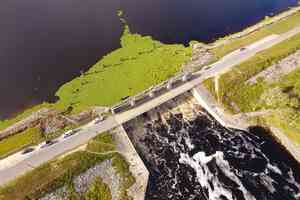


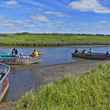
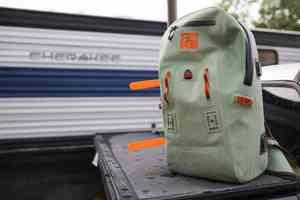
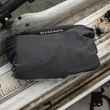
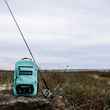
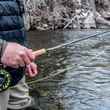

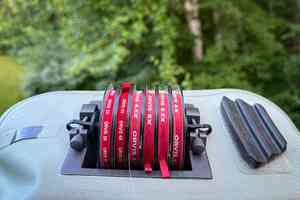
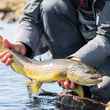
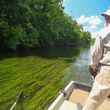
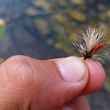




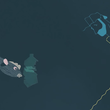
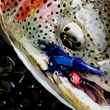
Comments